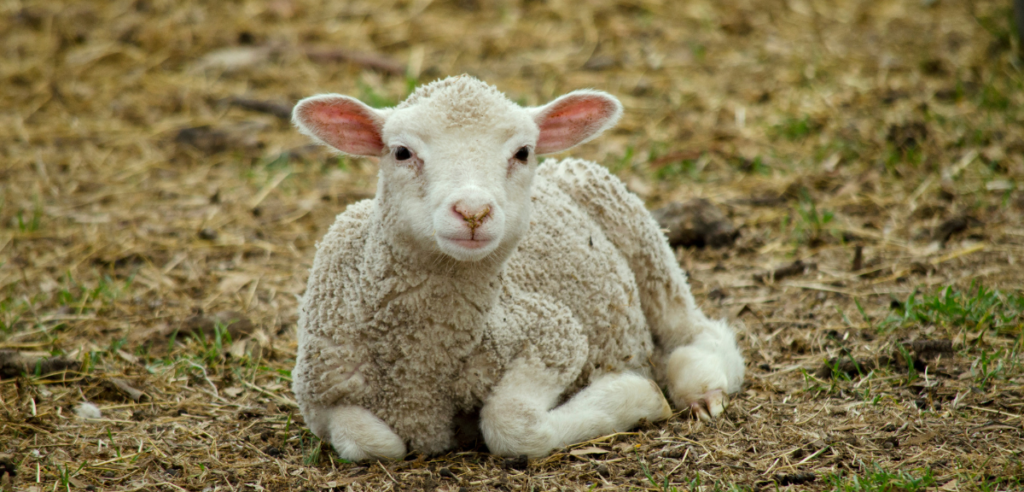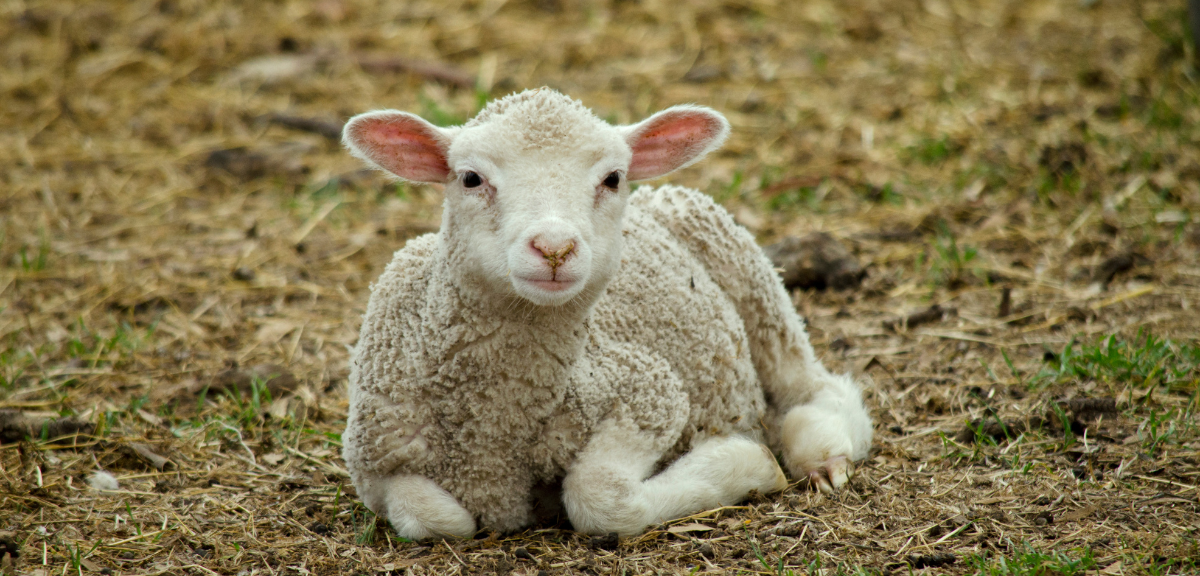
Lamb, the tender and flavorful meat associated with celebratory roasts and springy gyros, often carries a price tag that makes other meats blush. But why? Why is this delightful dish reserved for special occasions rather than a regular weeknight feast? Buckle up, meat lovers, because we’re about to dive into the complex world of lamb economics.
The lamb consumption and price projections for the next 5 years:
Supply and Demand, the Eternal Tango:
Compared to beef or chicken, lamb production is a much smaller ballet. Sheep aren’t as efficient meat machines as cows or chickens. They take longer to mature, produce less meat per animal, and have lower overall flock sizes. This limited supply, coupled with a growing appreciation for lamb’s delicate flavor, creates a classic economic tango: high demand bumping into low supply, pushing prices upward.
The “Grass-Fed” Factor:
Lambs, unlike their cow counterparts, are picky eaters. They’re herbivores, demanding fresh, lush pasture. This preference necessitates more land and careful grazing management, increasing production costs. And let’s not forget the “grass-fed” label, a siren song for health-conscious consumers, further inflating the price tag.
The Costly Cradle:
Raising and nurturing lambs is no cheap endeavor. They require specialized care, particularly during those first vulnerable weeks. Additionally, unlike their piglet peers, lambs typically only have one offspring per pregnancy, limiting the farmer’s return on investment.
Beyond the Meat: Processing and Logistics:
Once the lamb leaves the farm, the price waltz continues. Processing and transporting delicate lamb meat is more laborious and costly than dealing with hardier meats. Plus, smaller production volumes often mean less efficient shipping and distribution, contributing to the final price tag.
But wait, there’s more! The high cost of lamb extends beyond the meat itself. Bread, the perfect partner for any savory delight, also has its own pricier players. Consider these luxurious loaves:
- Ciabatta: This airy Italian bread, with its signature olive oil crust, requires specific flours, extended fermentation, and skilled baking, justifying its premium price.
- Sourdough: The tangy bite and artisanal appeal of sourdough come at a cost. The long fermentation process, careful feeding of the starter culture, and demand for organic ingredients all contribute to its higher price point.
- Pumpernickel: This dense, dark bread made with rye flour often features complex flavors and textures thanks to its unique preparation process, including steaming and slow baking. This dedication to craft translates to a higher price tag.
Is lamb worth the price?
Factors that might make lamb worth the price:
- Taste and quality: Many people find lamb to have a unique and delicious flavor compared to other meats. Additionally, high-quality, ethically sourced lamb can be incredibly tender and melt-in-your-mouth delicious.
- Health benefits: Lamb is a good source of protein, iron, and zinc, and it can be a lower-fat option than other red meats. Grass-fed lamb is particularly touted for its higher levels of omega-3 fatty acids.
- Special occasion: For some, lamb is a special occasion meat, reserved for holidays, celebrations, or romantic dinners. The luxury aspect can justify the higher price tag.
- Cooking skills and confidence: If you’re a skilled cook who enjoys preparing lamb dishes, then you might appreciate the challenge and creativity that comes with cooking this meat.
Factors that might make lamb not worth the price:
- Cost: Compared to other meats, lamb can be significantly more expensive. This can be a major deterrent for some people, especially with rising food costs.
- Availability: Depending on your location, lamb may not be readily available or as affordable as other meats.
- Nutritional alternatives: Other meats, like chicken or lentils, can provide similar levels of protein and iron at a lower price point.
- Personal preference: Not everyone enjoys the taste of lamb. Some may find it gamey or too rich.
Ultimately, the decision of whether lamb is worth the price is up to you. Consider your budget, preferences, cooking skills, and the occasion to make an informed choice.
Are there affordable lamb cuts?
Yes! Ground lamb, shanks, and shoulder cuts are often more budget-friendly options.
Stew Meat: This is a versatile and often very inexpensive option. You can use it for classic lamb stews, curries, chili, or even moussaka. Slow-cooking methods ensure tenderness and bring out the rich flavors.
Neck: Don’t be fooled by the name! Lamb neck chops can be incredibly delicious when braised or slow-cooked. Their intense flavor makes them perfect for hearty dishes like ragu or shepherd’s pie.
Breast: Another budget-friendly cut, lamb breast is full of fat and connective tissue, which melts down beautifully during slow cooking. Use it for pulled lamb, tagines, or fall-off-the-bone ribs.
Shanks: Lamb shanks are a classic for a reason. They’re full of flavor and relatively inexpensive, and they practically beg to be braised in red wine, beer, or tomato sauce. Serve them with creamy mashed potatoes for a cozy comfort food meal.
Shoulder Chops: Similar to neck chops, these are a bit tougher than some other cuts but perfect for grilling, pan-frying, or marinating. Marinating helps tenderize the meat and adds delicious flavor.
Ground Lamb: Like ground beef, ground lamb is incredibly versatile and budget-friendly. Use it for lamb burgers, meatballs, tacos, or even a lighter Shepherd’s pie made with mashed sweet potatoes.
And don’t forget the versatility of these cuts! Many can be roasted whole (shoulder) or diced and used in various dishes. Remember, slow-cooking methods are your friend with many of these affordable cuts, as they help break down the connective tissue and create melt-in-your-mouth tenderness.
So, next time you’re looking for a delicious and affordable lamb option, explore beyond the more expensive cuts and give these budget-friendly gems a try! You might be surprised at how flavorful and versatile they can be.
What are alternatives to lamb?
There are many great alternatives to lamb, depending on what you’re looking for! Here are a few options, grouped by what aspect of lamb you’d like to replace:
Flavor and texture:
- Beef: If you’re looking for a meat with a similar richness and umami flavor to lamb, beef can be a good option. Cuts like chuck roast, short ribs, and ground beef can be used in similar ways to lamb, though they may not be quite as tender.
- Pork: Pork shoulder and pork belly have a similar richness and fat content to lamb, making them good substitutes for braising or slow cooking. Ground pork can also be used in place of ground lamb in many recipes.
- Duck: Duck has a slightly gamier flavor than lamb, but it’s still very delicious. Duck legs and breasts can be roasted, grilled, or braised, and they make a great alternative to lamb in stews and curries.
- Goat: Goat meat has a more intense flavor than lamb, but it can be a good substitute if you’re looking for something a little different. Goat shoulder and legs can be roasted or braised, and ground goat can be used in place of ground lamb in many recipes.
- Chicken: If you’re looking for a lighter alternative to lamb, chicken is a good option. Chicken thighs and breasts can be roasted, grilled, or stewed, and they can be used in place of lamb in many recipes.
- Fish: Fish can be a great alternative to lamb if you’re looking for something healthy and sustainable. Salmon, tuna, and cod are all good options, and they can be roasted, grilled, or poached.
- Tofu or tempeh: If you’re looking for a plant-based alternative to lamb, tofu or tempeh can be a good option. They can be marinated and cooked in a variety of ways, and they can take on the flavors of the spices they’re cooked with.
Ultimately, the best alternative to lamb will depend on your specific preferences and dietary needs. I hope this gives you some ideas!
Consider substituting pork, chicken thighs, or even tofu for similar flavor profiles in certain dishes.
So, the next time you gaze longingly at that rack of lamb at the butcher shop, remember the complex waltz of supply and demand, the careful nurturing, and the luxurious processing that contribute to its hefty price tag. It’s a delicious investment, to be enjoyed and savored on those special occasions. But don’t forget, there’s a whole world of flavorful and affordable lamb cuts waiting to be discovered!
